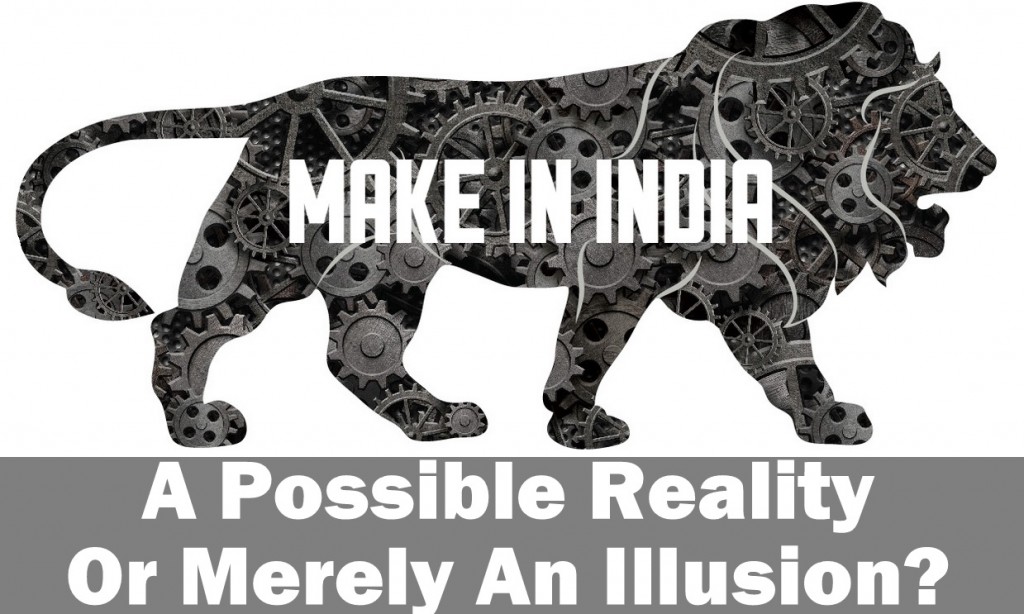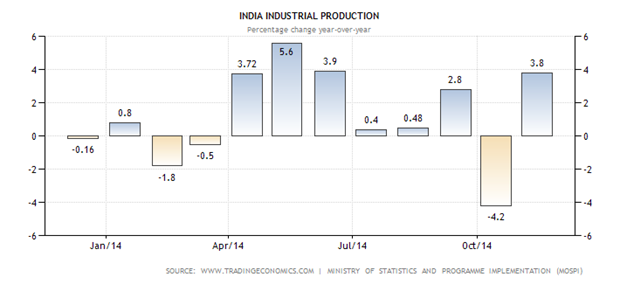Make In India, A Possible Reality Or Just An Illusion?

In 1983 Illustrated Weekly ran an article criticizing Operation Flood or what we in India commonly call as the ‘White Revolution’. The piece went to say how National Dairy Development Board (NDDB) and the IDC had totally lost the plot and India would never become self-sufficient in dairy products.
The article created a storm in India and the noise reached the parliament. It was a high and a low for Indian industry. At one end the news and media industry prided itself on uncovering the truth and reporting it to the common man. On the other end it was a low for the dairy industry and for one man in particular Dr Verghese Kurien.
By 1987 the Illustrated Weekly findings were proven to be wrong and the entire furor died down. The same year the Jha Committee report found that the NDDB had taken the right steps and we were well on our way to success. India has since then become the largest producer of milk in the world.
In 2014 Prime Minister Shri Narendra Modi launched what would be another revolution in the making. ‘Make in India’ is the new mantra and the objective was to encourage the production of goods within the country.
Again media and some very sincere critics have stood up and raised the noise. They have listed reasons why ‘Make in India’ is more like ‘Dream in India’ as the challenges in the way are many. I respect the critics and dismiss the media but as a Indian Business executive, I have decided to look at some perspectives for reasons that can lead to ‘Make in India’ being a success or a flop.
Again I attach no sentiment, no emotion, no nationalism or patriotism to this series. This would be a cold blooded look at practical reasons that can work for or against ‘Make in India’.
First let us define what is ‘Make in India’ or MII for short. The make in India website calls it a
“A MAJOR NEW NATIONAL PROGRAM. DESIGNED TO FACILITATE INVESTMENT. FOSTER INNOVATION. ENHANCE SKILL DEVELOPMENT. PROTECT INTELLECTUAL PROPERTY. AND BUILD BEST-IN-CLASS MANUFACTURING INFRASTRUCTURE. THERE’S NEVER BEEN A BETTER TIME TO MAKE IN INDIA.”
This means in pure classical economics there is going to be a demand and then there would be producers who would be incentivized to supply goods and Services to meet that demand.
So let’s look at Demand first.
Demand can be global or national.
Global Demand
The global demand seems to increasing day by day. We have started consuming goods and services like never before. According to worldwatch.org there are 1.7 billion members of “the consumer class”—nearly half of them in the developing world. A lifestyle and culture that became common in Europe, North America, Japan, and a few other pockets of the world in the twentieth century is going global in the twenty-first.
In addition, there are continents that are developing, particularly Africa, where the growth of demand for goods and services has been phenomenal in the last decade. Also assuming that the fighting in the Middle East would finally come to an end, this region would also get to a path of rebuilding and this will help create further demand for MII
National Demand- According to the Asian Development bank the services sector, which constituted around 49% of the GDP in 1990–91, now, contributes 64.5% of the GDP (2008–09). Of this, the export of services comprises around 16% of the services GDP and is less than 10% of the total GDP.
So, you notice something interesting here – most of our domestics demand is actually services oriented and not so much products oriented. So there is a healthy domestic demand for services but what about the “Made in India “brand? Well that is something we have to visit later.
Also not to forget the 300 Million odd people below poverty line who might be the direct beneficiary of the Make In India Initiative. Henry Ford started Model T and paid his workers more than $5 a week in order to spur demand and create the American middle class. Make In India in a way, would model to do that and help generate more demand.
Producer Incentives
Now the producer incentives can come from four factors
- Cheaper costs of production & Movement of goods
- Ease of doing business
- Market with the ability to pay that improves margin
- Finding the right skill set
I think it is looking at the producer incentives that you realize that we fall flat on our faces. All 4 factors mentioned above are a suspect. Even if we say that the market would finally take notice of our quality and pay the price for a Make In India product, I still wonder how we will account for factors 1,2 and 4.
Let’s look at factor 1, cheaper costs of production and movement of goods. Now this factor alone will expose the lack of infrastructure in the country. Raw materials have to make their way into the factory and finished goods have to move out. In the middle of this the processing of materials into goods would take water, electricity, real estate, clinics and hospitals to support this facility.
The lack of them obviously increases the costs of production. In absence of electricity there is loss of production, or the alternative is to set up your own unit and incur more costs on it. Some others depend on Diesel generator sets to run factories. The current energy deficiency in India is around 5 % according to the Central Energy Agency. Basically apart from the west of the country and Gujarat in particular all regions are energy deficient. This is despite India being the third largest producer of electricity in the world and having one of the cheapest electricity rates per unit.
Water is another short resource and the indiscriminate use of ground water and lack of perennial rivers especially in the Deccan is a major issue as well.
If you look at India’s industrial production over the last year, one notices that there are variations. Please read this graph on the industrial output as a reference. There are major variations across the same year. This could be due to fluctuation in the demand but does not bode well for a project like ‘MII’

All of this is leading to a situation where we can’ t invest in manufacturing based on domestic demand only and this would require us to look at exports for sustaining the right kind of investments. Now exports in not really India’s strong point and that would make Make In India even more difficult.
Finally on the right skill set. I remember reading an article where a polytechnic was training students on the use and fixing a carburetor. The challenge today is that not too many cars use a carburetor and training our talent on something like this is a total waste of time.
So is ‘Make in India’ economically viable? What are the challenges that the project and movement will face? What about the projects that are currently running under ‘Make In India’? Can India compete in the global market?
We will try to find the answers to all of these questions in the next couple of issues. Till then questions, comments, suggestions are welcome.

[…] a time when “Make in India” initiative is going full throttle, products “Made by Indians” outside our shores are […]
[…] the previous article I had opened the debate and discussed whether make in India was feasible from a demand supply […]